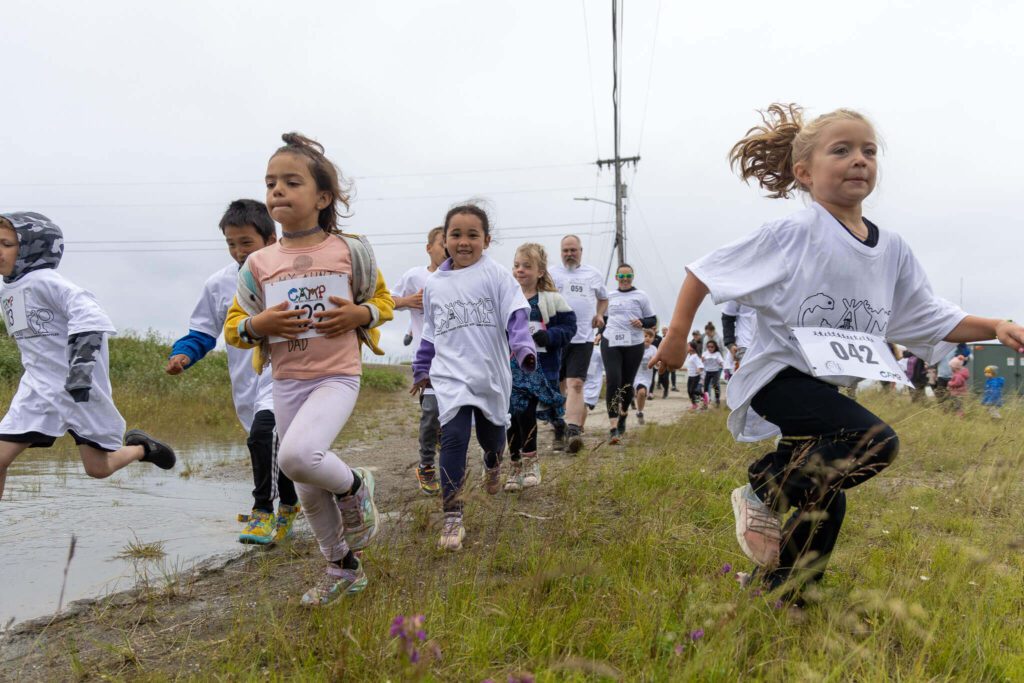The Iditarod Trail Sled Dog Race is 1,000 miles long, but for multiple dog teams, the most competitive stretch of trail came down to the final mile.
The crowd cheered as Wade Marrs came bounding down Nome’s Front Street behind his dog team. Somewhere between Koyuk and Elim, musher Pete Kaiser gained nearly two hours on Marrs.
In the end, Marrs refused to give up.
“He did make me work for it… my legs are, like, shaking right now.”
Marrs was out of breath, panting and sweating. He collapsed on the seat of his sled once his lead dogs crossed the finish line.
He says he was running for miles as Pete Kaiser’s sled dogs bared down on his team. Minutes later, they came into the finish cute.
Kaiser’s team probably could have continued. His sled dogs were banging at their harnesses to go, even after he dropped his snow hook and parked his sled.
“They did good, and they looked good. We managed them right, and I think we got the best possible performance we could have got, I think, so I am happy with that.”
Wade Marrs was also impressed with Kaiser’s team.
“From what I’ve seen, he’s got the best-looking dog team on this race. They are beautiful. I knew he’d be coming hard. I actually fully expected for him to catch me and pass me, but I wanted to make him work for it, and he made me work really hard, and I don’t know how I stayed in front of him.”
A similar race for Nome played out only a few hours later.
From Koyuk, Scott Smith slowly started to close a nearly five-hour gap on Burmeister. By the time the two teams reached White Mountain, 76 miles later, the difference was roughly an hour. Scott Smith says he made the move in order to avoid getting caught, himself. Paul Gebhardt and Richie Diehl were hot on his heels.
“I had Richie and Paul behind me, and they can have some speed, so if I went after Noah and I caught him, great, but if I didn’t, then at least I’d stay in front of them.”
This is Smith’s sixth Iditarod. He’s never placed higher than twenty-sixth. He was driving a dog team he thought might have what it takes to finish up front.
“Earlier in the year, I just thought they were a really nice group, and I thought, ‘I definitely could be possible.’ You just gotta go out and race it if you’re gonna get it, though, you know.”
When he crossed the finish line, Smith had no idea how well he had placed.
“I broke the top ten?… Wow, that feels good for sure.”
Smith says he wasn’t sure he’d be able to overtake Burmeister. He had to stop and change his runner plastic just before he got to Safety.
“It benefitted me, though, no complaints.”
Six minutes later, Nome’s own Noah Burmeister pulled in.
Burmeister hasn’t driven a dog team in the Iditarod in a decade. But, he maintained a position in the top ten throughout the race. Back in Rohn, he said he wanted to prove he could do more than train puppy teams for his older brother Aaron. After crossing the finish line in eleventh place, he said he felt he had done just that.
“I feel real good about it, I learned a lot this year, and I’ll change some stuff around and come back better next year.”
When he arrived under the Burled Arch, Burmeister’s older brother and well-known musher Aaron Burmeister was there to greet him.
Mushers and dog teams will continue to arrive in Nome through the end of the week. Some will race to get there; others will find pride in simply completing the journey.







